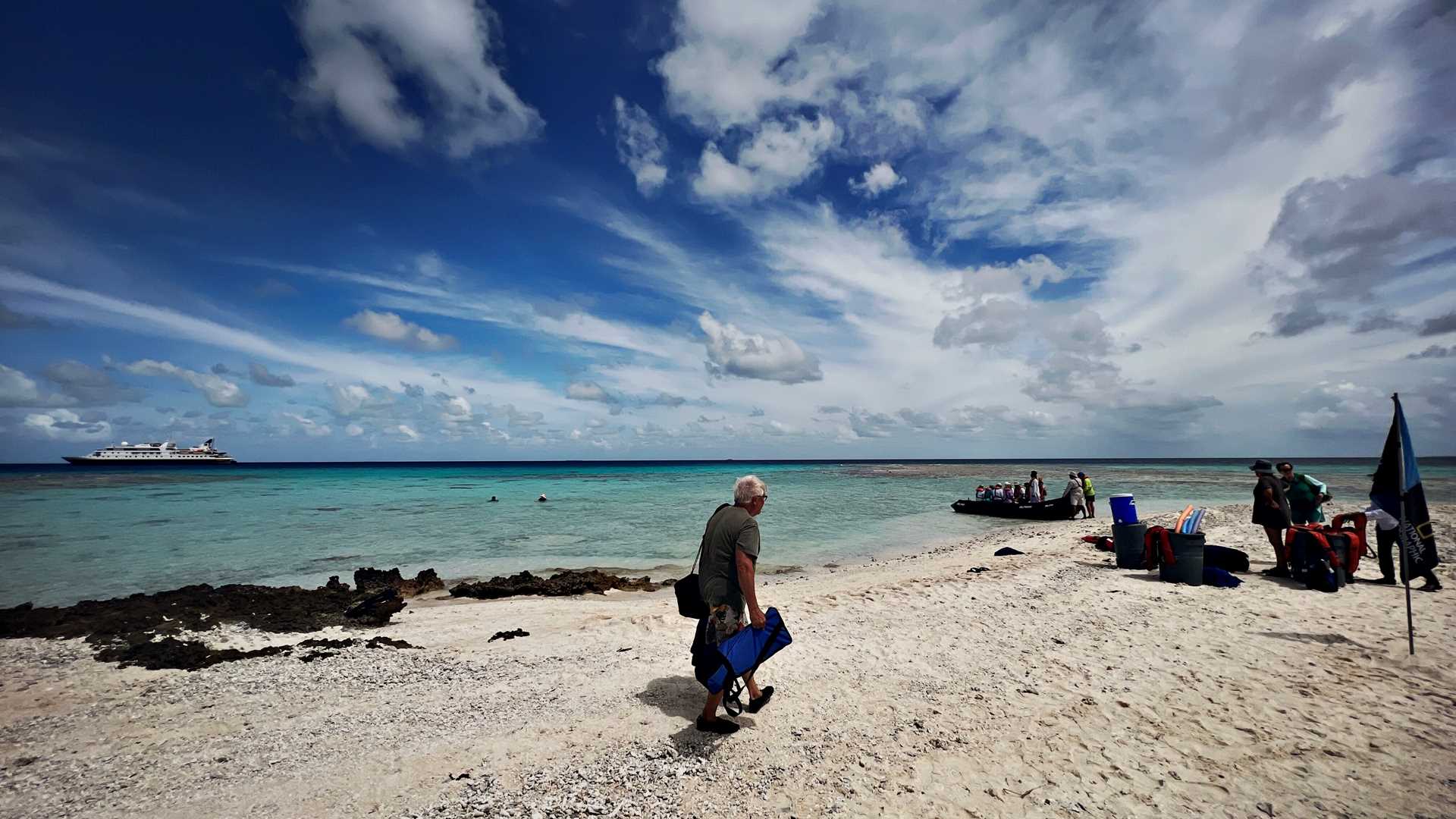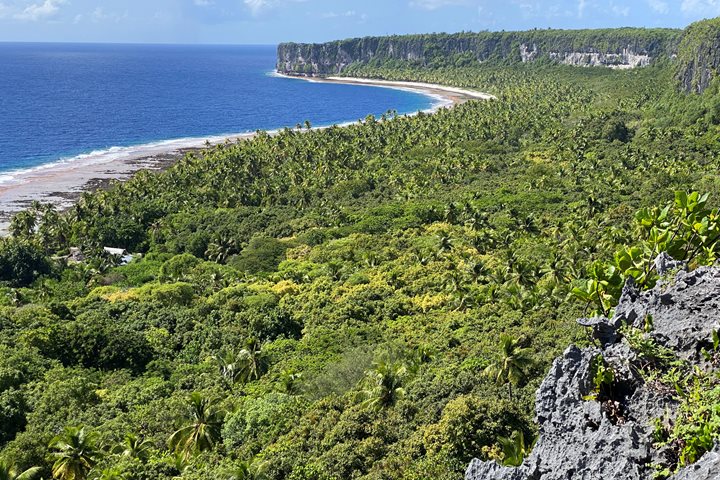Some people spend Easter Sunday in church or hunting for colored eggs. We travelers on National Geographic Orion enjoyed the holiday snorkeling, exploring, or just relaxing on a coral beach on a remote and uninhabited Pacific atoll.
The first European to spot Tahanea was Spanish navigator Domingo de Boenechea (fittingly, as the name Domingo means “Sunday” in Spanish) on November 9, 1774. We also felt like explorers setting foot on previously unknown territory. Unlike our Spanish navigator predecessor, our visit included the arrival of a mobile ice cream stand brought to shore by the ship’s hotel department. We quickly licked our chocolate and honeycomb ice cream before it melted in the hot tropical sun as lively Polynesian music blasted out of a boombox.
The local hermit crab population didn’t know what to make of this invading group of foreigners, initially hiding in their shells before eventually getting used to us and emerging to crawl along the beach on their merry way.
Once back on the ship, we spent the afternoon at sea enjoying a series of lectures on subjects ranging from iPhone photography to the settlement of Polynesia. Up in the observation lounge, guest artists Marotearii and Poemana discussed the art and tradition of Polynesian tattoos. Master tattoo artist Marotearii explained the role the artform has played in Polynesian culture and the significance of the designs as personal, spiritual, and cultural statements. In a very moving gesture, Marotearii presented the ship with a design he had drawn on tapa cloth inspired by the experiences of our journey together on National Geographic Orion.
Later that evening, after dinner, Poemana and Marotearii gave a fascinating lecture on Tahitian dance and the process of preparing for the annual Heiva festival where hundreds of dancers and musicians dressed in colorful traditional costumes compete for the top spot in this colorful cultural event.







